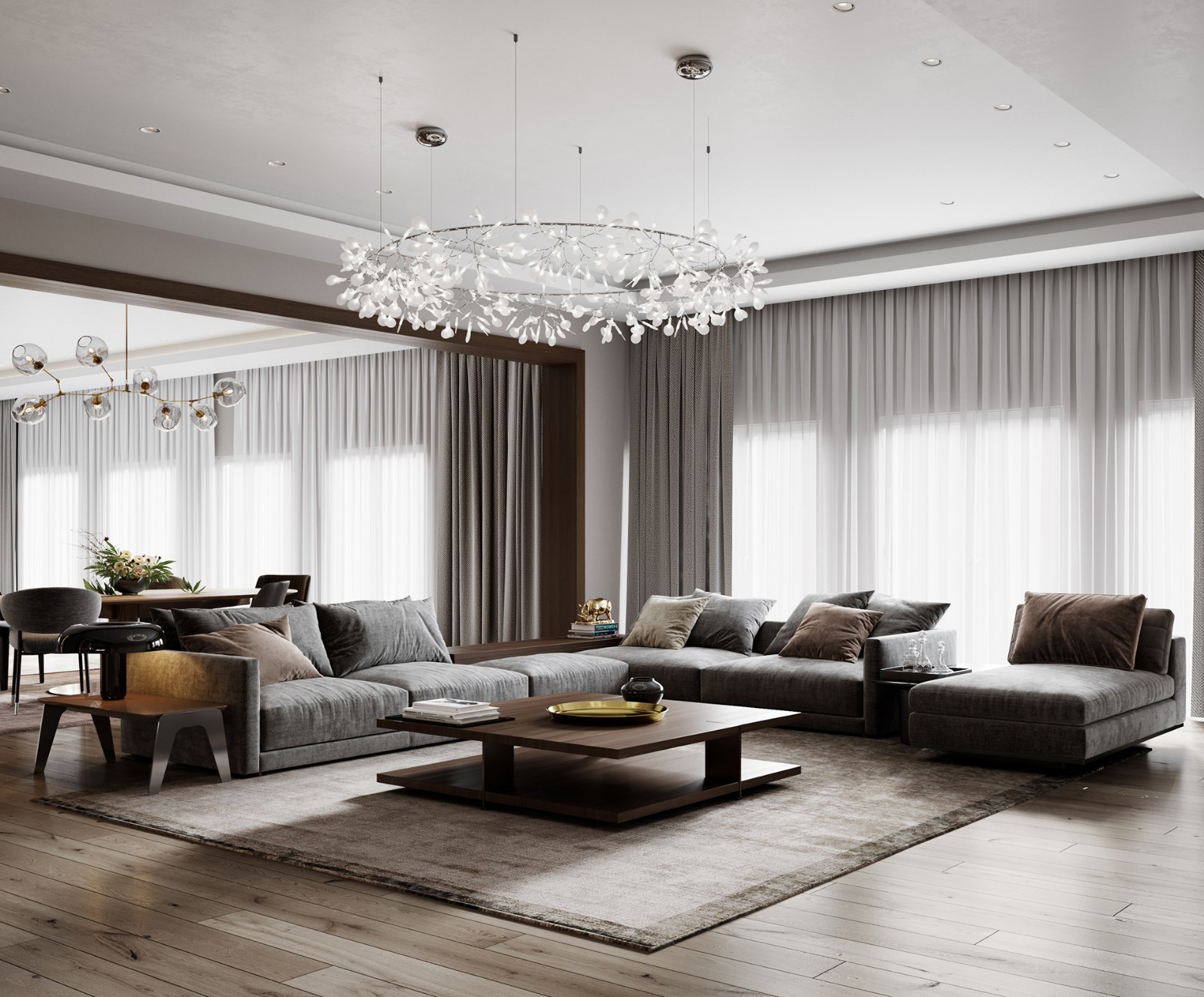Office Building in Los Militares Street Mobil Arquitectos + Cruz - Browne Arquitectos
2012-03-08 00:00
架构师提供的文本描述。该项目是位于智利圣地亚哥的一座办公楼。这片土地被我们称为“城市街区的头目”,它是一座前住宅区面向东北方向的尽头。该地区,“新拉斯康迪斯”,目前正在进行大规模的城市改造,创造了一个城市四分之一的混合用途的住宅,办公室和零售空间。该计划被认为是一项直截了当的行动,使该地点尽可能开放和持续,供行人使用。水平连续性的实现使我们能够扩大开放空间,并将较低层次的足迹降至最低。
Text description provided by the architects. This project is an office building located in Santiago de Chile. The site is what we call “head of an urban block,” a northeast-facing end of a former residential block. The area, “Nueva las Condes,” is currently undergoing a large urban transformation, creating an urban quarter of mixed-use residential, office and retail space. The project was conceived as a straightforward operation, keeping the site as open and continuous as possible for pedestrian traffic. The horizontal continuity achieved allowed us to extend the open space and minimize the footprint on the lower level.
这种开放空间、空气和连续性的独特条件也使得在一个相对较小的场地中引入城市尺度成为可能。我们不想把这座大楼当成普通的办公大楼。我们希望这座建筑以立方体的形式呈现出来,它的高度、长度和深度都是相等的。体积配置有非常清晰的边缘和与地面的最小接触。设计的目的是增强连续性和现实性的观念。实际上,这个体积是由两个身体组成的,一个身体在一个中轴上稍微从另一个身体上移开。这在较低的层次上创建了两个天井,在街道上添加了一个三维元素。
This unique condition of open space, air and continuity also made possible the introduction of an urban dimension to a relative small site. We did not want to think of this building as a generic office tower. We wanted the building to present itself as a cubic volume with equivalent dimensions of height, length and depth. The volume is configured with very clear edges and minimum contact with the ground. The design is intended to give strength to the idea of continuity and presence. The volume, in fact, consists of two bodies, slightly displaced one from the another, on a central axis. This creates two patios on the lower level, adding a three-dimensional element to the street.
这座大楼与该地区的大多数办公楼不同,是一个不透明的建筑。每个立面都被视为对阳光和热量的反应。我们希望最大限度地利用自然光线进入每个办公室,同时控制不必要的热量。由于它的方向,建筑物既不反射阳光到周围,也不吸收不必要的直接阳光。这是可持续建筑的基本条件,使建筑在能源消耗和对邻里的影响方面表现得更好。
The building, unlike most of the office towers in the area, is an opaque volume. Each facade is treated as a response to sunlight and heat. We wanted to maximize the natural light coming into each office and, at the same time, control unwanted heat. Due to its orientation, the building neither reflects sunlight to its surroundings, nor does it absorb unnecessary direct sunlight. This is a basic condition for sustainable architecture and makes the building perform much better in terms of energy consumption and in terms of its impact on the neighborhood.
Facades-Vertical Surfaces
从外部看,建筑物的结构是固定的。从地板到天花板的顺序是相等的,以突出空洞和空气的存在。窗户放置的规律只会被设计用来控制阳光的垂直和水平元素所打断。这一新的解释预制混凝土,被称为“布-太阳”,增加了一种特殊的质量和独特的身份,为这座建筑。
From the outside, the building is regular in its configuration. The sequence from floor to ceiling is equal in order to highlight the presence of voids and air. The regularity with which the windows are placed is only interrupted by the vertical and horizontal elements designed to control sunlight. This new interpretation of prefabricated concrete, known as “brise-soleil,” adds a special quality and unique identity to this building.
与该地区的大多数建筑不同,这个体积的外部装饰更加不透明和粗糙。这一结果与圣地亚哥(以及世界上许多地方)的一般办公建筑门面和玻璃幕墙形成鲜明对比。在北面,几何和结构挑战是通过使用小元素
Unlike most of the buildings in the area, the exterior finishing of this volume is more opaque and coarser. The result stands in vivid contrast with the generic paradigm of office building facades in Santiago (and like much of the world) with their glass facade curtain walls. On the northern facade, the geometrical and structural challenges are addressed by the use of small elements – rustic, simple, angulated concrete shades.
这些元素被设计成从街道水平吸引人,而从内部的效果是通过建立外部和内部之间的距离来创造一种封闭和平静的感觉。外面和里面不再只有一层薄薄的玻璃,现在我们可以看到厚度了。另一方面,南面是开放的,没有垂直的元素来控制太阳干扰视图。
These elements are designed to be attractive from the street level, while from the inside the effect is to create a sense of enclosure and peace by establishing a distance between the exterior and interior. There is no longer just a thin layer of glass between the outside and inside; now we can see thickness. On the other hand, the southern facade is open; there are no vertical elements for sun control to interfere with the view.
我们探索了一种主要用于隔墙或外墙的材料。通常,蜂窝混凝土砌块用于快速施工和制造具有良好热转变性能的厚壁。然而,它们几乎不增加建筑的实质,而且常常被简单地用作“填充”材料。
We explored a material that is used mostly for partition or exterior walls. Typically, cellular concrete blocks are use for rapid construction and for creating thick walls with good heat transition performance. However, they add little of substance to the architecture and are often used simply as a “filling” material.
我们想用这种材料,但是我们需要把它的使用从一块变成一块。其结果是一片1.5英寸的蜂窝混凝土用于建筑物的外部装修。事实证明,它是一种很好的材料。在混凝土结构墙体的基础上,蜂窝式混凝土板充分满足了局部保温规范的要求。它还增加了一个有趣的外观外墙。
We wanted to work with this material, but we needed to transform its use from a block to a slab. The result is a 1.5 inch slab of cellular concrete used for the exterior finish of the building. It has proved to be a good material. Added to the concrete structural walls, the cellular concrete slab has more than adequately met the local insulation codes. It also adds an intriguing look to the exterior wall.
 举报
举报
别默默的看了,快登录帮我评论一下吧!:)
注册
登录
更多评论
相关文章
-

描边风设计中,最容易犯的8种问题分析
2018年走过了四分之一,LOGO设计趋势也清晰了LOGO设计
-

描边风设计中,最容易犯的8种问题分析
2018年走过了四分之一,LOGO设计趋势也清晰了LOGO设计
-

描边风设计中,最容易犯的8种问题分析
2018年走过了四分之一,LOGO设计趋势也清晰了LOGO设计














































































